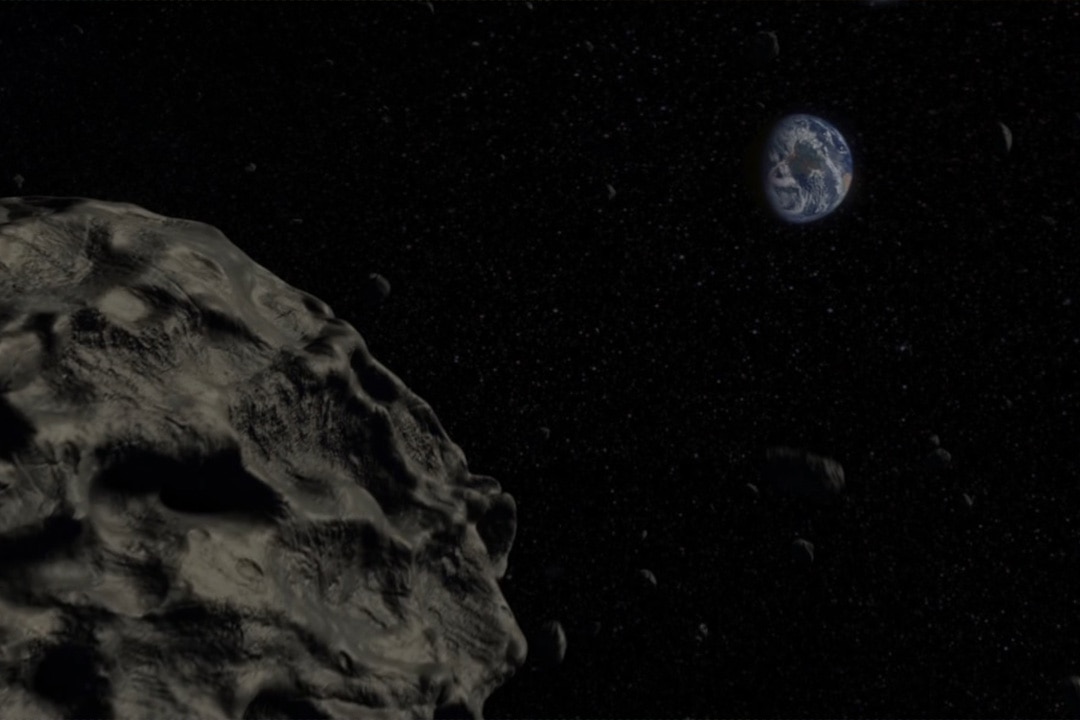Create a free profile to get unlimited access to exclusive videos, sweepstakes, and more!
New Observations Reveal the Bizarre Origin of the Asteroid Phaethon and the Geminids Meteor Shower
Things are weirder than we imagine.

In the 2014 disaster movie Asteroid vs Earth (streaming now on Peacock!), a wave of asteroids is on a collision course with our planet and there’s no way to stop them. With no other options, a team of scientists cook up a wacky plan to move Earth itself out of the asteroids’ path. Fortunately, we haven’t been faced with an extinction level impact in the last 66 million years. But if any asteroid was going to make a run on Earth, it might be an Apollo asteroid like Phaethon.
Apollo asteroids take their name from 1862 Apollo, an asteroid discovered in 1932 by German astronomer Karl Reinmuth. In order to be designated an Apollo object, an asteroid must have a semi-major axis greater than one Astronomical Unit (the average distance from Earth to the Sun) and a perihelion (furthest point from the Sun) distance shorter than Earth’s aphelion (shortest distance from the Sun). In simple terms, it means that an Apollo asteroid’s orbit crosses Earth’s, which makes them targets of particular interest because of their potential for impact.
RELATED: The trail of Phaethon
Phaethon was discovered in 1983 by Simon Green and John Davies, using data from the Infrared Astronomical Satellite (IRAS). At its farthest point, Phaethon stretches well beyond the orbit of Mars with an inclination of more than 22 degrees above the plane of the solar system. Then it turns around and heads back toward the Sun, crossing across Earth’s orbit along the way and making a close flyby of the Sun. In fact, Phaethon takes its name from the son of the Greek Sun God, because its orbit takes it closer to the Sun than any other named asteroid, but that’s not the only thing that makes it interesting. It’s also an “active” asteroid.
WHAT ARE ACTIVE ASTEROIDS?
Active asteroids are a sort of middle ground classification for objects that behave both like asteroids and comets. Their orbits are asteroid-like, in that they remain within the orbit of Jupiter, while comets often have long orbits which take them out into the Kuiper Belt. Despite their asteroid-like orbits, active asteroids have comet-like tails of debris trailing behind them, making them appear visibly like comets. It’s believed that those tails are made of dust or water mass, being shed as the asteroid encounters increasing pressure from solar winds near the Sun.
However, new observations carried out by the Solar and Heliospheric Observatory (SOHO) — a joint mission between NASA and the ESA — have revealed that Phaethon’s tail is something else entirely. The asteroid passed nearest to the Sun in May of 2022, and astronomers took the opportunity to point SOHO’s Large Angle and Spectrometric Coronagraph at it using a couple of different filters. The results of their study were published in The Planetary Science Journal.
RELATED: Is a wave of asteroids headed toward Earth? Sort of.
The working model was that Phaethon’s tail was made of dust blasted from its surface, but when astronomers looked at it with dust-sensitive filters, it was nowhere to be seen. However, when they looked at it with filters sensitive to sodium, it showed up bright and clear. If Phaethon is shedding dust, it’s such a small amount that it doesn’t show up on our instruments. Instead, the new observations are a pretty clear indication that Phaethon’s tail is made of a stream of sodium atoms. While that answers one question about Phaethon, it opens up new questions about the associated Geminids meteor shower.
THE ORIGIN OF THE GEMINIDS METEOR SHOWER
It has long been believed that Phaethon is responsible for the brilliant Geminids meteor shower which occurs each year all over the world. The shower begins November 19 and ends on Christmas Eve, peaking December 14, when more than 120 meteors per hour pierce the atmosphere.
Most meteor showers are caused by comets as debris from their tails burns up in the atmosphere. While Phaethon isn’t a comet, astronomers believed the Geminids were essentially the same, the result of a dust tail hitting the planet. Now that we know Phaethon isn’t producing a significant amount of dust, astronomers have to rework that model.
The study authors suggest a new explanation: That a piece of Phaethon broke off a few thousand years ago and shattered into an untold number of tiny bits. It’s those bits which could be the source of the Geminids. Just the aftermath of a long-ago cosmic black eye. Of course, this discovery illustrates the ever-changing nature of science, and it’s possible that Phaethon is even stranger than we now suspect. If it is, we might find out in a few years when JAXA’s Demonstration and Experiment of Space Technology for INterplanetary voYage with Phaethon fLyby and dUst Science (DESTINY+) mission visits Phaethon in 2028.
Catch Asteroid vs Earth, streaming now on Peacock!




























